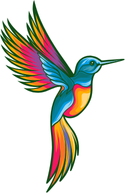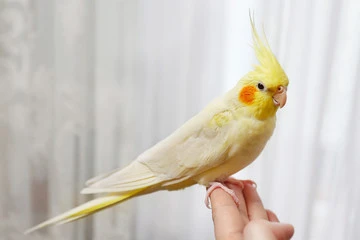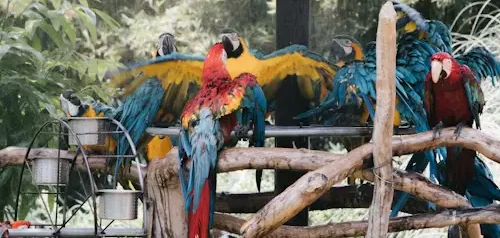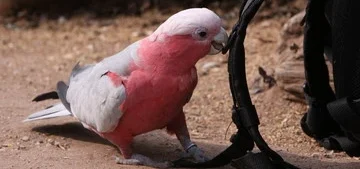Red Canary Bird: Ultimate Guide For A Vibrant, Joyful Life
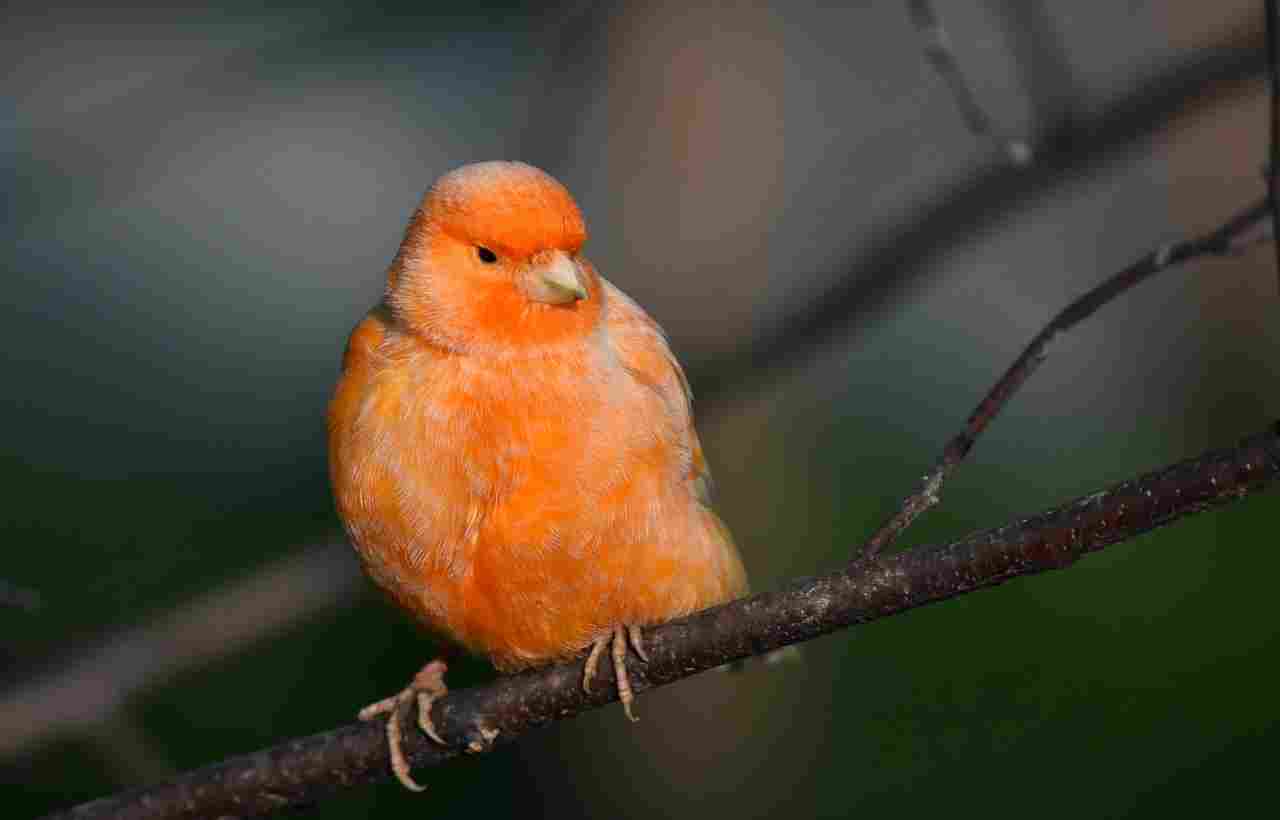
Table of Contents
What is a Red Canary?
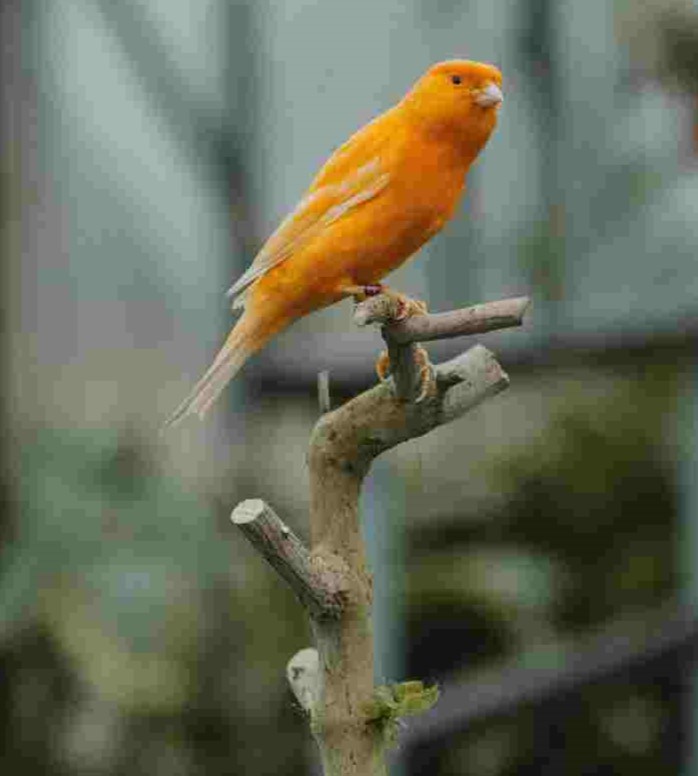
The red canary bird is one of the most striking and sought-after varieties in the canary family. Unlike the natural yellow canaries found in the wild, the red canary is a product of careful selective breeding and represents one of the most successful color mutations in domesticated birds. These small songbirds captivate bird enthusiasts with their brilliant red plumage, which can range from soft orange-red tones to deep, vibrant crimson depending on genetics and diet.
Red canaries belong to the “Red Factor Canary” category, a term that refers to their genetic ability to convert certain carotenoid pigments from their food into the red coloration visible in their feathers. This unique characteristic comes from the presence of special genes that allow the bird to metabolize and display these red pigments, primarily through a process involving lipochromes.
Lipochromes are fat-soluble pigments responsible for the yellow and red coloration in canaries. In red factor canaries specifically, these lipochromes interact with dietary carotenoids to produce the distinctive red plumage that makes these birds so special. The intensity and shade of red can vary significantly based on both genetic factors and nutritional intake.
Red canaries maintain the pleasant temperament and melodious singing ability of their yellow counterparts while adding a splash of dramatic color to any home. Their popularity has grown steadily since their development, making them a favorite among both novice and experienced bird keepers alike.
History of the Red Factor Canary
The development of the red canary represents one of the most fascinating chapters in bird breeding history. The journey began in the early 20th century when breeders sought to introduce red coloration into the traditionally yellow canary species.
The breakthrough came through crosses with the Red Siskin (Spinus cucullatus), a small finch native to northern South America with striking red plumage. Hans Duncker, a German geneticist, led groundbreaking work in the 1920s and 1930s, systematically crossing Red Siskins with yellow canaries. This interspecies breeding was revolutionary but challenging, as the resulting hybrids were often sterile, particularly the males.
Through persistent efforts and selective breeding of fertile female hybrids back to canary males, breeders gradually established birds with the desired red factor gene. By the 1940s, stable breeding lines of red canaries began to emerge. The development continued through the mid-20th century, with breeders refining the intensity and consistency of the red coloration.
The modern red factor canary is a testament to decades of careful selection and breeding. What’s particularly fascinating is that today’s red canaries contain very little Red Siskin DNA—perhaps less than 0.1%—yet they carry the crucial genes responsible for processing red pigments. This remarkable achievement in selective breeding has given us the vibrant red canaries that grace aviaries and homes worldwide today.
Notable figures in this development included not only Duncker but also breeders like Clarence B. Clark in the United States, who helped popularize and refine red canaries in North America following World War II. Their collective efforts transformed canary breeding and added an entirely new palette of colors to these beloved songbirds.
Red Canary Appearance and Varieties

Red canaries display an impressive spectrum of red hues, from soft coral and orange-red to deep, intense crimson. This variation is due to both genetic factors and dietary influences, creating a diverse array of possibilities within the red canary world.
| Color Variety | Description | Genetic Factors |
|---|---|---|
| Intensive Red | Deep, solid red with maximum color saturation | Strong color genes, typically with “intensive” factor |
| Orange-Red | Warmer tone with orange undertones | Moderate red factor expression |
| Frosted Red | Red with a slight silvery appearance | Combination of red factor with frosting genes |
| Red Mosaic | Patterned red areas with lighter patches | Mosaic pattern genes combined with red factor |
| Red Bronze | Red with bronze undertones | Bronze factor combined with red genes |
The coloration in red canaries is fundamentally determined by genetics but substantially influenced by diet. The “red factor” gene allows these birds to convert yellow carotenoid pigments (like lutein) from their food into red ones (like canthaxanthin) in their feathers. Without the right dietary supplements, even genetically red canaries will appear predominantly orange or yellowish after molting.
The ideal physical characteristics of a show-quality red canary include:
- Even, consistent coloration throughout the plumage
- Good feather quality with tight, smooth appearance
- Typical canary body shape with proper proportions
- Alert, upright posture
- Clear eyes and healthy beak
- Proper size (approximately 5-6 inches in length)
Breed standards may vary somewhat between different canary organizations, but all emphasize color intensity, evenness of coloration, and overall bird health and condition.
Caring for Red Canary Birds
Housing
Providing proper housing is essential for maintaining healthy and happy red canaries. These active birds need adequate space to move, exercise, and express natural behaviors.
Ideal Cage Requirements:
- Size: Minimum 18″ long × 18″ high × 18″ wide for a single bird; larger for pairs
- Bar spacing: No more than ½ inch to prevent escapes
- Shape: Rectangular cages are preferred over round ones, providing more flying space
- Materials: Stainless steel or powder-coated metal for durability and safety
Essential Cage Furnishings:
- At least 3-4 perches of varying diameters (⅜” to ¾”) and materials (natural wood branches are ideal)
- Food and water dishes (positioned to avoid contamination)
- Bathing dish or attachable bath (offered several times weekly)
- Cuttlebone and mineral block for calcium and beak conditioning
- Safe toys for enrichment (swings, bells, foraging toys)
Cage Placement:
- Position the cage against a wall (not in the center of a room) for security
- Keep away from direct sunlight, drafts, and kitchen fumes
- Place at eye level or slightly below for the bird’s comfort
- Maintain temperature between 65-75°F (18-24°C)
- Provide 10-12 hours of light daily with proper darkness for rest
Hygiene and Maintenance:
- Clean food and water dishes daily
- Change cage liner/paper 2-3 times weekly
- Deep clean the entire cage monthly with bird-safe disinfectant
- Regularly inspect and replace worn perches or toys
A properly set up cage provides security while allowing for exercise and natural behaviors, essential for your red canary’s physical and psychological well-being.
Diet
The diet of red canaries deserves special attention, as it directly impacts both their health and the vibrant red coloration that makes these birds so desirable. Proper nutrition ensures your red canary maintains its brilliant plumage through each molt.
Core Diet Components:
- High-quality canary seed mix (50-60% of diet)
- Fresh vegetables (20-30% of diet): dark leafy greens, carrots, sweet peppers
- Limited fresh fruits (5-10%): apples, berries, melons
- Egg food (particularly during breeding and molting seasons)
- Commercial pellets formulated specifically for canaries
Red Color-Enhancing Foods:
- Natural sources: Sweet red peppers, paprika, beetroot (in moderation)
- Commercial color supplements: Containing canthaxanthin and beta-carotene
- Special “red factor” canary foods with appropriate carotenoid balance
Feeding Schedule:
- Fresh seed mix available at all times
- Fresh vegetables and fruits provided daily, removed after 2-3 hours
- Color supplements administered according to package directions, typically during molting periods
- Special supplements during breeding and molting seasons
Expert Tip: For maximum color intensity, begin color supplementation about 2-4 weeks before the molt starts and continue throughout the molting period. This ensures the new feathers develop with rich red pigmentation.
Foods to Avoid:
- Avocado (toxic to birds)
- Chocolate and caffeine
- Alcohol
- High-salt or high-fat human foods
- Fruit seeds and pits (many contain cyanide compounds)
It’s important to note that excessive color supplementation can potentially cause health issues. Always follow package directions and consult with avian veterinarians about appropriate supplementation levels.
Health and Wellbeing
Maintaining optimal health is crucial for red canaries to thrive and display their beautiful coloration. Regular observation and preventative care can help catch potential issues early.
Common Health Concerns in Red Canaries:
- Respiratory Infections
- Symptoms: Labored breathing, wheezing, tail bobbing, nasal discharge
- Prevention: Maintain clean cage, avoid drafts and extreme temperature changes
- Action: Consult avian veterinarian promptly; respiratory issues can progress rapidly
- Mites and External Parasites
- Symptoms: Excessive scratching, feather loss, visible red mites in cage corners
- Prevention: Regular cage cleaning, occasional mite prevention treatments
- Action: Appropriate mite treatment for both bird and cage
- Feather Issues
- Symptoms: Poor feather quality, delayed molt, uneven coloration
- Prevention: Proper nutrition with adequate protein and vitamins
- Action: Evaluate diet, ensure proper humidity, consider vet check if persistent
- Color-Feeding Related Problems
- Symptoms: Liver stress, obesity (specific to overdoing color supplements)
- Prevention: Follow recommended dosages of color supplements
- Action: Reduce or eliminate artificial color enhancers if signs of health issues appear
Preventative Care Schedule:
- Daily: Observe behavior, droppings, and food intake
- Weekly: Check weight, examine feather condition
- Monthly: Thorough physical check, inspect feet and beak
- Annually: Veterinary check-up with an avian specialist
Signs of a Healthy Red Canary:
- Alert, active behavior
- Clean, bright eyes
- Smooth, well-groomed feathers
- Regular eating and drinking
- Normal droppings (firm dark portion with white urates)
- Proper perching posture
- Regular singing (particularly in males)
Investing in preventative care and staying vigilant for early signs of health issues will help ensure your red canary maintains both good health and vibrant coloration.
Grooming
Proper grooming is essential for maintaining the stunning appearance of red canaries and promoting overall health. Unlike some other pet birds, canaries are largely self-sufficient with grooming, but they do benefit from owner assistance in certain areas.
Bathing: Red canaries should have regular access to bathing opportunities, which helps maintain feather condition and assists with the natural preening process. Offer a shallow bathing dish with room-temperature water 2-3 times weekly. Some canaries prefer being misted with a fine spray bottle instead. Either method helps keep feathers clean and in optimal condition.
Nail Care: Canaries’ nails grow continuously and may require occasional trimming if they don’t wear down naturally. Provide varied perch textures, including natural branches and concrete perches, to promote natural nail wear. If trimming becomes necessary, it should be done carefully to avoid cutting the blood vessel (quick) inside each nail. Many bird owners prefer having an experienced avian veterinarian demonstrate proper technique before attempting this themselves.
Feather Maintenance: Healthy red canaries will handle most feather care themselves through preening. However, owners should monitor feather condition, especially during and after molting. The vibrant red coloration is directly tied to feather health, so proper nutrition during molting periods is particularly important. Ensure adequate humidity (40-60%) in the environment to prevent dry, brittle feathers.
Beak Conditioning: Provide a cuttlebone or mineral block in the cage at all times. These items not only supply essential calcium but also help your canary keep its beak properly worn and shaped through natural pecking behavior.
With proper attention to these grooming aspects, your red canary will maintain its beautiful appearance while staying comfortable and healthy.
Breeding Red Canaries
Breeding red canaries requires understanding of both general canary breeding practices and the specific genetic factors that influence red coloration. Whether you’re a hobbyist breeder or simply interested in the process, here’s what you need to know about successfully breeding red canaries.
Selecting Breeding Pairs:
- Choose healthy birds at least 1 year old with good body condition
- Select for intensity and evenness of red coloration
- Avoid breeding birds with health issues or genetic defects
- Consider line-breeding with known pedigrees for predictable results
- Understand that red factor is inherited as a dominant trait, but intensity varies
Breeding Setup:
- Provide a specialized breeding cage (minimum 24″ × 16″ × 16″)
- Include a sturdy nest cup and appropriate nesting material
- Ensure proper lighting cycles (14-16 hours light during breeding season)
- Maintain temperatures between 65-75°F (18-24°C)
- Install a divider that can be removed when ready to pair birds
Breeding Cycle:
- Conditioning (4-6 weeks before pairing): Enhanced diet with egg food, increased protein
- Pairing: Introduce birds gradually, watching for compatibility
- Nest building: Female typically constructs nest over 3-7 days
- Egg laying: Usually 3-5 eggs, one per day
- Incubation: 13-14 days, primarily by female
- Hatching and rearing: Chicks hatch naked and blind, fledge at 18-21 days
- Independence: Young birds self-sufficient by 30-35 days
Color Management in Breeding:
- Enhance breeding birds’ diet with appropriate color supplements 4-6 weeks before breeding
- Continue color-enhanced diet during egg formation and chick rearing
- Begin color supplementation for young birds before their first molt
- Keep detailed records of breeding results and color development
Ethical Breeding Considerations:
- Maintain genetic diversity by avoiding excessive inbreeding
- Never breed birds showing signs of health problems or genetic defects
- Provide proper care for all offspring, with plans for responsible placement
- Focus on health and vitality alongside color characteristics
- Join reputable canary clubs for guidance and support
Successful breeding of red canaries combines knowledge of genetics, attentive care, and proper nutrition. With patience and careful management, breeders can produce birds with stunning red coloration while maintaining overall health and vigor in their canary lines.
Red Canary Behavior and Temperament
Red canaries share the same delightful temperament as their yellow counterparts, making them wonderful companion birds for those who appreciate their unique behaviors and melodious songs. Understanding their natural behaviors helps provide appropriate care and enrichment.
Natural Behaviors:
- Singing: Males are prolific singers, particularly during breeding season. Their complex melodies are the hallmark of canary keeping. Females may also sing, though typically less frequently and with simpler songs.
- Preening: Canaries spend significant time maintaining their feathers through preening, essential for their appearance and flight capability.
- Foraging: In the wild, canaries spend hours searching for food. Provide foraging opportunities with scattered seeds or foraging toys.
- Bathing: Most red canaries enjoy bathing, which helps maintain feather condition and the vibrant red coloration.
- Dawn and dusk activity: Canaries are typically most active in the morning and evening hours.
Temperament Characteristics:
- Generally gentle and non-aggressive
- Somewhat shy and observant compared to other pet birds
- Not typically hands-on pets, preferring to be admired from a slight distance
- Males are often more territorial during breeding season
- Form stronger bonds with caretakers who respect their space
Enrichment Activities:
- Provide a varied environment with different perching options
- Offer rotating toys that encourage natural behaviors
- Place the cage where the bird can observe household activity
- Play recordings of canary songs (particularly for single birds)
- Provide supervised out-of-cage time in a safe, enclosed room
Addressing Common Behavioral Issues:
- Excessive feather plucking: Often indicates stress, boredom, or health problems. Evaluate cage conditions, provide more enrichment, and consult a veterinarian.
- Reduced singing: May indicate illness, stress, or seasonal changes. Males typically sing less during molt.
- Aggression during breeding season: Normal for males; may require temporary separation from other birds.
- Fear behaviors: Provide more cover and security in the cage; approach slowly and speak softly.
Red canaries, while not as interactive as larger parrots, provide endless joy through their beautiful songs and fascinating natural behaviors. Their relatively independent nature makes them excellent pets for those who appreciate birds but have limited hands-on time to spend with them.
Red Canary Health Problems
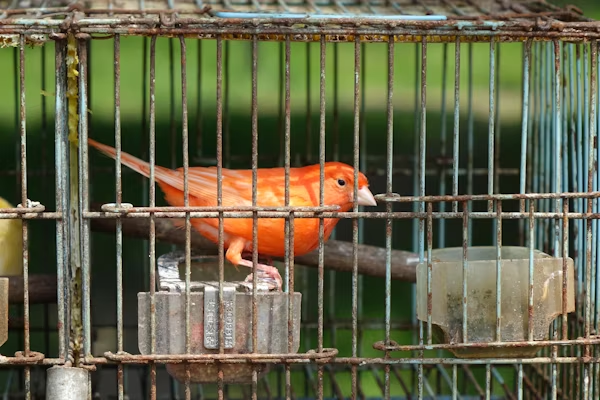
Red canaries are generally robust birds, but they do face some health challenges, including a few that are specific to or more common in red factor varieties. Being aware of these potential issues allows for early intervention and better outcomes.
Red Factor-Specific Health Concerns:
- Liver Stress from Color Supplementation
- Symptoms: Lethargy, fluffed feathers, reduced appetite, weight loss
- Cause: Excessive use of artificial color supplements
- Prevention: Follow recommended dosages, use natural color foods when possible
- Treatment: Veterinary evaluation, liver support medications, diet adjustment
- Color Feeding Imbalances
- Symptoms: Poor feather quality, uneven coloration, delayed molting
- Cause: Improper balance of nutrients during critical color development periods
- Prevention: Well-rounded diet with appropriate supplementation
- Treatment: Dietary correction, proper supplements during next molt
- Red Factor Sterility Issues
- Symptoms: Reduced fertility rates in intensely red birds
- Cause: Genetic factors related to color intensity in some bloodlines
- Prevention: Careful breeding selection, avoiding excessive “doubling up” of color genes
- Treatment: Breeding program adjustments, genetic diversification
General Canary Health Problems:
- Respiratory Infections
- Symptoms: Labored breathing, wheezing, tail bobbing, open-mouth breathing
- Treatment: Requires prompt veterinary attention; often involves antibiotics
- Scaly Face and Leg Mites
- Symptoms: Crusty growths on beak, face, or legs; intense itching
- Treatment: Appropriate mite treatments prescribed by avian veterinarian
- Egg Binding
- Symptoms: Female straining, sitting on cage floor, abdominal swelling
- Treatment: Emergency veterinary care; often requires humidity, warmth, calcium, and possibly manual extraction
- Nutritional Deficiencies
- Symptoms: Poor feather quality, weakness, abnormal growth
- Treatment: Diet correction with appropriate supplements
When to Seek Veterinary Care:
- Any signs of respiratory distress
- Significant change in behavior or appetite
- Unusual droppings for more than 24 hours
- Visible injuries or growths
- Difficulty perching or moving normally
Finding an avian veterinarian with experience treating canaries is essential, as their small size requires specialized knowledge. Keep contact information readily available, and establish a relationship before emergencies arise. Annual wellness checks are highly recommended for detecting subtle issues before they become serious problems.
Finding and Buying a Red Canary
Acquiring a healthy, well-bred red canary requires research and careful selection. Whether you’re looking for a pet singer or planning to start a breeding program, knowing where and how to find quality birds is essential.
Sources for Red Canaries:
- Reputable Breeders
- Most reliable source for healthy, well-socialized birds
- Can provide detailed information about genetics and lineage
- Often specialize in particular varieties or color intensities
- May offer guidance and support after purchase
- Find through local bird clubs, avian exhibitions, or online breeder directories
- Bird Specialty Shops
- Select stores that specialize in birds rather than general pet stores
- Look for clean facilities and healthy-looking birds
- Staff should be knowledgeable about canary care and red factor specifics
- Ask about the source of their birds and any guarantees offered
- Bird Shows and Exhibitions
- Excellent opportunity to see various red canary varieties
- Meet multiple breeders in one location
- Compare quality and prices
- Learn about current breeding standards
- Online Sources
- Exercise extra caution with online purchases
- Request video calls to see birds before purchasing
- Check reviews and references thoroughly
- Understand shipping policies and stress factors
What to Look for When Selecting a Red Canary:
- Physical condition: Alert posture, clean feathers, clear eyes, normal breathing
- Behavior: Active, responsive to surroundings, not overly fearful
- Coloration: Even red tones without patchy areas (unless specifically a variegated variety)
- Age: Younger birds (1-3 years) adapt better to new environments
- Sex: Males are typically preferred for singing; females for breeding programs
- Health records: Any available vaccination or health screening information
Questions to Ask the Seller:
- How old is the bird?
- Is this bird parent-raised or hand-raised?
- What specific diet has the bird been on?
- Has color supplementation been used? What kind?
- What is the bird’s singing ability (for males)?
- Has the bird ever been bred (for potential breeding stock)?
- Is there any guarantee period or health warranty?
- What is the return policy if health issues are discovered?
Ethical Considerations:
- Avoid purchasing birds from overcrowded or unsanitary conditions
- Be wary of prices that seem too good to be true
- Support breeders who prioritize health and genetic diversity
- Consider adopting rescued canaries when available
- Ensure you can provide proper long-term care before purchasing
Finding the right red canary takes time and patience, but the reward is a healthy, beautiful bird that will bring years of enjoyment. Building a relationship with reputable breeders can be particularly valuable, especially if you plan to keep canaries long-term.
Frequently Asked Questions (FAQ)
Q: How long do red canaries typically live? A: With proper care, red canaries typically live 8-10 years, though some may reach 12-15 years. Their lifespan depends greatly on genetics, diet, environment, and preventative healthcare.
Q: Do red canaries sing as well as yellow canaries? A: Yes, red canaries can sing just as beautifully as their yellow counterparts. The red factor gene affects only coloration and has no impact on singing ability. However, individual singing talent varies among all canaries regardless of color.
Q: Will my red canary turn yellow if I don’t provide color food? A: Yes, red canaries will gradually lose their red coloration and appear more yellowish or orange after molting if they don’t receive carotenoid supplements in their diet. The red coloration in these birds is diet-dependent and must be maintained through proper nutrition.
Q: Are red canaries more expensive than other canary varieties? A: Typically, yes. Red canaries, especially those with intense, even coloration, often command higher prices than yellow or other varieties due to the specialized breeding and diet required to produce quality red factor birds.
Q: Can red canaries be kept with other birds? A: Red canaries can be housed with other canaries in appropriately sized aviaries, but males may become territorial during breeding season. They should not be housed with larger or more aggressive bird species that might intimidate or harm them.
Q: How can I tell if my red canary is male or female? A: Males generally sing more frequently and with more complex songs. Females rarely sing or sing very little. Physical differences are subtle, but males typically have a more pronounced “singing posture” with a slightly straighter posture when singing. Definitive sexing may require DNA testing.
Q: Do red canaries require special lighting? A: While not absolutely required, full-spectrum lighting that mimics natural sunlight can benefit red canaries by helping with vitamin D synthesis and potentially enhancing the visual appearance of their red coloration. Natural, indirect sunlight (not through glass) is also beneficial when safely available.
Q: How often do red canaries molt? A: Red canaries typically undergo one complete molt annually, usually in late summer or early fall. This is the critical time for color feeding to ensure the new feathers grow in with the desired red coloration.
Q: Can I breed red canaries with yellow canaries? A: Yes, red factor canaries can be bred with yellow canaries. If the red canary carries the dominant red factor gene, some offspring will inherit the ability to convert carotenoids to red coloration. Breeding programs often use such crosses strategically to improve other traits while maintaining color potential.
Conclusion
Red canary birds represent one of the most stunning achievements in selective bird breeding, combining the delightful temperament and melodious singing of traditional canaries with breathtaking red plumage. Their vibrant coloration, derived from just a tiny fraction of Red Siskin genetics, offers a living testament to both human ingenuity and the fascinating complexity of avian genetics.
Caring for red canaries requires attention to their specialized dietary needs, particularly the carotenoid supplements that maintain their signature coloration. Beyond this special requirement, they thrive with the same thoughtful housing, regular healthcare, and environmental enrichment that benefits all canary varieties.
Whether you’re attracted to red canaries for their striking appearance, interested in their unique breeding history, or simply appreciate their beautiful songs, these birds offer a rewarding pet ownership experience. They balance being relatively low-maintenance compared to larger parrots while still providing the joy of birdsong and the visual splendor of their ruby-toned feathers.
For those considering adding a red canary to their home, we encourage you to connect with experienced breeders and other red canary enthusiasts. Join online forums, local bird clubs, or attend bird shows to expand your knowledge and appreciation of these remarkable birds. With proper care and attention to their specific needs, your red canary can be a vibrant, melodious companion for many years to come.
Have you kept red canaries or are you considering adding one to your family? Share your experiences or questions in the comments below, and help build our community of red canary enthusiasts!
